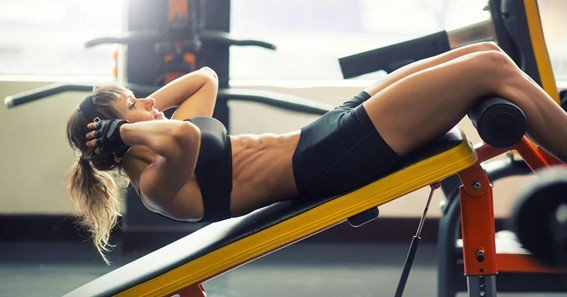Finding the best ab bench for your home gym in 2025 means sifting through dozens of models, specs, and marketing claims. We dug into hands-on lab tests, expert reviews, and current customer feedback published within the past six months to bring you unbiased, up-to-date recommendations.
How We Picked the Best Ab Bench
-
Core-specific decline angles (for effective spinal flexion)
-
Adjustability & pad gap (comfort for multiple exercises)
-
Weight capacity & stability (safety for heavy lifters)
-
Footprint & storage (small-space friendliness)
-
Real-world testing scores from certified trainers and strength coaches
Best Ab Bench Reviews: Our 2025 Top Picks
1. Titan Fitness TITAN Series Adjustable Bench — Best Overall
-
Angles: 9 back / 3 seat (0–85°)
-
Capacity: 1,000 lb flat; 600 lb angled
-
Highlights: Zero pad gap, IPF-standard 17″ height, knurled handle & wheels for easy vertical storage
-
Why it tops the list: Commercial-grade 11-gauge steel and an under-$500 street price make it the most versatile, value-packed ab bench for lifters who also press and row.
2. XMark Adjustable Decline Ab Bench — Best Dedicated Ab Bench
-
Angles: 12 decline levels (from slight drop to steep –45°)
-
Capacity: 400 lb
-
Stand-out features: Bull-horn handle for safe mounting, 4″ contoured leg rollers, 2.5″ Duraguard pad
-
Ideal for: Users focused primarily on sit-ups, Russian twists, and decline dumbbell work who want maximal core activation without extra bulk.
3. REP Fitness AB-5200 2.0 — Best Premium/Feature-Rich Bench
-
Angles: Flat-incline-decline (optional post gives –8, –6, –4°); 10 back / 4 seat settings
-
Capacity: 1,000 lb
-
Perks: Closed-ladder adjustment, optional wide pad, six custom colors, vertical storage
-
Worth the upgrade because: REP’s newest zero-wobble chassis marries pro-level stability with home-gym space savings.
4. Flybird Adjustable Bench — Best Budget Pick
-
Angles: 6 back / 4 seat positions, including one decline
-
Capacity: 600 lb
-
Weight: 21 lb; folds to < 10″ thick
-
Why we like it: Under US$160, it arrives mostly assembled, tucks under the bed, yet still offers sturdy steel construction and plush synthetic-leather pads—perfect for small apartments and beginners.
5. Body-Solid BFAB20 Semi-Recumbent Ab Bench — Best for Lower-Back Support
-
Design: Semi-recumbent track guides crunch and knee-raise motion
-
Capacity: 180 lb user weight
-
Ergonomics: Integrated lumbar support reduces spinal shear; dual-function carriage trains upper and lower abs separately
-
Who benefits: Older adults or anyone rehabbing back issues who still want a focused core workout without deep decline angles.
Buying Guide: What to Look For in an Ab Bench
-
Decline Range & Locking Pins – Look for at least 30° decline; finer increments allow progressive overload.
-
Leg Roller Quality – 3-4″ foam with vinyl wrap keeps shins comfortable and prevents slipping.
-
Pad Gap & Thickness – A gap under 2″ (or zero-gap tech) avoids lower-back arching during sit-ups; 2a ″+ foam pad protects tailbone.
-
Frame Gauge & Weight Rating – 11- to 14-gauge steel and ≥ 400 lb capacity ensure longevity.
-
Storage Solutions – Wheels, vertical-stand rails, or full foldability help small-space users keep floors clear.
Training Tips for Your New Ab Bench
-
Start shallow. Begin at –10° and master form before tackling steeper declines.
-
Control the eccentric. Lower for three counts to maximize time under tension.
-
Mix movements. Alternate decline crunches with bench-anchored leg raises and oblique twists.
-
Pair with compound lifts. Use flat mode for dumbbell presses or seated shoulder work to stretch your investment further.
FAQ
-
What angle is best on an ab bench for beginners?
A decline between –10° and –15° lets newcomers engage the core without excessive lumbar strain. -
Can I use a weight bench as an ab bench?
Yes—if it offers decline settings and secure leg rollers. Models like the Titan Series or REP AB-5200 convert easily. -
Is a zero-gap bench worth it for ab work?
For taller users or those prone to back pain, eliminating the seat-back pad gap keeps the spine in neutral and is worth the premium. -
How much weight should I hold during decline sit-ups?
Start body-weight only. Once you can perform 15-20 controlled reps, add a 5–10 lb plate, progressing gradually. -
Do ab benches help lose belly fat?
They strengthen core muscles, but fat loss requires a calorie deficit and full-body training; think of the bench as a muscle-building tool, not a spot-reduction device.










